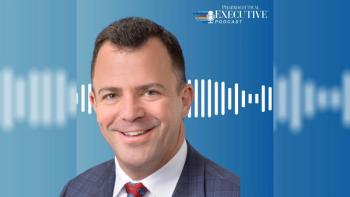
Outlining Current and Future Trends in Medical Information
With the role of Medical Information in pharma companies changing in recent years, this article outlines some current and future trends including globalization and the use of data to drive change.
Medical Information has long played a crucial role within pharma companies, as a reliable source of support for consumers and HCPs. In recent years, its role has increased in strategic value to the overall goals of the company. This article outlines some of the current and future trends in Medical Information, including globalization, an increase in the complexity of the contacts handled by staff, the changing profile and expanded role of Medical Information specialists, and the use of data to drive change
Globalization
Pharma manufacturers increasingly serve a global customer base, and with that comes the need for a global Medical Information solution. In our experience, most manufacturers that outsource the Medical Information function have a preference for a “one provider” global model, but often face challenges in finding a provider that can meet both their US and ex-US needs.
Many of these companies are adopting a strategy of employing three separate Medical Information providers-for North America, for the UK and the EU, and for the Asia-Pacific region-while using a CRM and associated content that serves their global needs (with the needed tweaks to address country and regional differences).
This approach can be very effective. In some ex-US areas of world, it is not the norm for consumers to contact pharma manufacturers directly, resulting in low volumes that can be handled by a “regional” team that is well-versed in local regulatory requirements.
Increase in complexity
The volume of contacts from consumers and HCP has reduced from peaks reached about 20 years ago. In today’s information age, both consumers and HCPs often seek information on-line prior to contacting the pharma manufacturer. This has reduced volumes, but has also increased the complexity of the inquiries that do reach the company. Adding to the complexity is the increasing breadth of regulatory considerations, including REMS, corporate integrity agreements, and an increase in government audits.
Alternative, technology-driven communication channels (such as AI) have increased in use. These channels are generally not effective for complex inquiries (either from the perspective of cost or customer experience) but do serve a purpose-they can be used to address simple, frequently-asked questions received either during or after operating hours.
Similarly, non-HCP triage teams can also serve the need to answer less-complex questions. For example, Customer Care staff can answer questions about a drug’s gluten content, while escalating more complex questions (e.g. “I’m taking these three different drugs, can I take them with this new prescription?”) to an HCP-staffed team.
A good basic strategy is to determine the repetitive, simple questions that can be addressed by a technology-driven solution (perhaps supported by a Customer Care team) and use HCPs to handle the more complex inquiries.
Leveraging Medical Information staff
As a result of the increased complexity of inquiries handled by HCP-staffed Medical Information teams, there is a growing use of PharmDs-and even MDs-on these teams. Also driving this trend is the increasing number of drugs available only from a specialty pharmacy and newer treatment approaches (e.g. targeted therapy and immunotherapy for many types of cancer). With these drugs come considerations that impact complexity, such as administration, dosing/titration, and drug interactions.
More and more frequently, PharmDs on Medical Information teams are authoring and updating response letters, a function previously delegated to external or internal medical writers. The PharmD’s hands-on knowledge of the types of inquiries and their product expertise is effectively leveraged to fulfill this need.
In most cases, HCPs on Medical information teams receive the same (or similar) training as MSLs. It’s yet to be seen what the long-term effects of COVID-19 will be, but as offices receive fewer visits from MSLs and pharma representatives, companies are beginning to leverage Medical Information staff as virtual MSLs.
The use of telemedicine by patients exploded in the second quarter of 2020 and continues at very high levels. This will impact how Medical Information teams function. Patients and health care providers will want to both see and speak to the staff, and staff will be able to share illustrations and documents to help provide answers to complex questions.
Chronic diseases, an aging population, a decreasing number of single practitioners and a shortage of some physician specialties have created a strain on the healthcare system. Pharma manufacturers, though their Medical Information teams, can play a significant role in helping to alleviate this strain.
Data analytics
There is great value in the data gathered from patient and HCP contacts received by Medical Information teams. An increasing number of pharma companies are focusing on actionable consumer and HCP insights and, as a result, conducting additional research and enacting changes. By doing so, they are translating questions and comments into actions that help them serve patients in a more informed and more comprehensive way.
In closing: The months and years ahead will bring significant change to the role of Medical information within pharma companies. And while much of this change can be anticipated (as outlined in this article), other factors are sure to arise that will impact Medical Information in ways currently unforeseen.
Authors
Irene Infanti, RN, MSN, President. II Healthcare Consulting, LLC
Mary Anne Greenberg, CEO, Diligent Health Solutions., LLC
Newsletter
Lead with insight with the Pharmaceutical Executive newsletter, featuring strategic analysis, leadership trends, and market intelligence for biopharma decision-makers.




